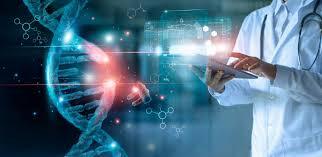
Global Tech Insights, Silicon Valley, CA - In a groundbreaking discovery, scientists have unveiled the potential of programmable DNA as a medium for future general-purpose computing. As traditional silicon-based computing approaches its theoretical limits, this discovery paves the way for a potential paradigm shift in the world of technology.
A Dive into DNA Computing
DNA, the molecule that encodes the genetic instructions for all known living organisms, has been an area of interest for researchers due to its vast information storage capability. Each strand of DNA can theoretically store up to 215 petabytes (215 million gigabytes) of data in a single gram. Researchers have been exploring ways to harness this storage potential for computational purposes.
The Mechanism Behind Programmable DNA
Scientists have developed techniques to encode data into DNA sequences and later retrieve and decode this data. This is achieved by converting binary code (the ones and zeros of traditional computing) into DNA sequences comprising the four nucleotide bases: Adenine (A), Cytosine (C), Guanine (G), and Thymine (T).
However, storage was just the first step. The recent innovation lies in making DNA "programmable." Through a series of controlled chemical reactions, scientists can now cause DNA strands to undergo specific changes in response to certain inputs, mimicking the logical operations of a traditional computer.
Implications for General-Purpose Computing
Ultra-High Density Storage: One of the most immediate benefits of DNA-based computing would be data storage. With the ever-increasing demand for storage due to Big Data, AI, and IoT, DNA offers a compact solution.
Parallel Processing: Unlike traditional computers which handle tasks sequentially, DNA computations can occur in parallel. This means billions of operations could be executed simultaneously, offering a way to handle complex problems with unprecedented speed.
Energy Efficiency: DNA computing operations require minimal energy, primarily during the reading or writing phases. Once data is encoded in DNA, it requires no energy to maintain, unlike traditional electronic storage.
Environmentally Friendly: DNA is biodegradable, making it an eco-friendly alternative to silicon chips, which can have harmful environmental impacts during manufacturing and disposal.
Challenges Ahead
Despite its immense potential, several challenges remain:
Speed: DNA computations, being chemical reactions, are inherently slower than electronic ones.
Error Rates: DNA synthesis and reading are subject to errors. Ensuring accuracy in computations will be crucial.
Cost: Current DNA synthesis and sequencing technologies are expensive, making it less feasible for widespread commercial use.
In Conclusion
Programmable DNA represents a thrilling frontier in the evolution of computing. While it may not replace silicon-based computers in all applications, it offers a complementary solution, especially for tasks that require massive parallel processing or long-term data storage. As research progresses and technology becomes more refined, the world may soon witness a harmonious blend of biological and electronic computing, reshaping the technological landscape.